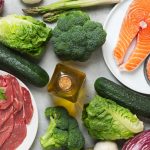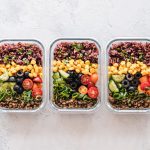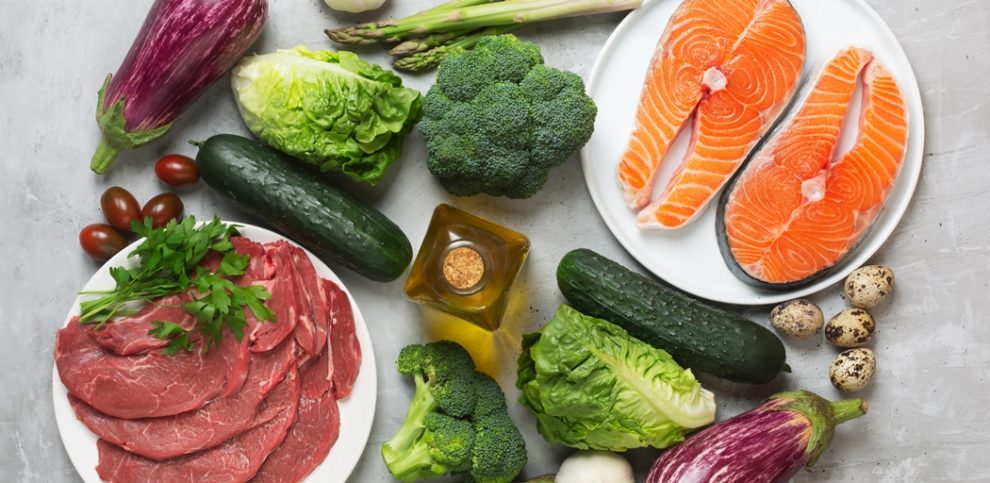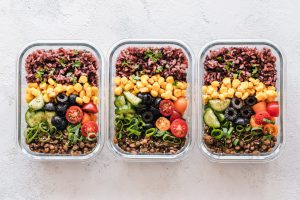Low carbohydrate diets are a known way to lose weight, improve the muscle/fat ratio and get many other health benefits. Nevertheless, it happens that the ketogenic diet does not bring us the expected results. Why is this happening?
Sometimes after the initial success comes stagnation and lack of energy, but don’t worry – this is a common problem. Achieving and maintaining a ketosis requires time and commitment. If we don’t see the effects, maybe we should adjust the proportions of macro nutrients, change the form of exercise or include more microelements in the menu. Once we adjust these elements, we will be able to experience the beneficial effects of a ketogenic diet. No matter what our goal is, small changes in ketogenic nutrition can make the effects much better.
But how can this be done? We decided to present the 5 most common mistakes made by beginner Ketomaniacs.
1st Mistake: Incorrect calculation of macro nutrients
Macro-feedback control is the key to success on a ketogenic diet. Inappropriate adjustment of the quantity and sources of individual macro nutrients can have the opposite effect to that expected. Everyone has an individual need for macronutrients, so it is important to calculate the exact amount of protein, fats and carbohydrates that our diet should provide, tailored to your lifestyle. If we experience stagnation in our progress, it is possible that we eat too much carbohydrates or too little protein or fat or provide far too many calories.

What to do about it?
First calculate your macro nutrient requirements. Then follow the instructions below:
1) Protein in the first place.
It helps to lose weight, satisfy hunger for a long time, build and maintain muscle mass. Therefore, it should not be missing from our menu. The need for this macro component is related to physical activity:
High physical activity – 1.6 grams of protein per kilogram of body weight (about 150 grams for a person weighing 90 kilograms).
Moderate physical activity – 1.3 grams of protein per kilogram of body weight (about 120 grams for a person weighing 90 kilograms).
Low physical activity – 1 gram of protein per kilogram of body weight (about 90 grams for a person weighing 90 kilograms).
Attention to carbohydrates.
Total carbohydrate intake should be in the range 20-50 grams.
If you rarely exercise, you should consume less. Athletes can afford a maximum of 50 grams per day.
The rest of the calories should come from fat.
To determine this value, the daily intake of protein and carbohydrates should be deducted from the total calorie intake. The remaining calories should come from healthy fats.
2nd Miastake: sweeteners
Controlling the proportions of macro nutrients is important, but it does not mean that we should eat and drink everything we feel like. Artificial sweeteners such as aspartame, saccharin and suclarose can irritate the digestive system, cause inflammation and even disturb the intestinal bacterial flora. Worse still, sweeteners stimulate the reward system in the brain as much as sugar or even cocaine. This means that when we eat calorie-free sweeteners, the brain reacts the same way as when we eat sugar. This state of affairs increases the appetite and makes it difficult to maintain ketosis.
What to do about it?
Instead of choosing diet drinks, it is best to get used to the body’s total renunciation of sweets, e.g. by drinking highly mineralized water.

3rd Mistake: too much dairy
On a ketogenic diet it is easy to exaggerate with dairy products. It has a lot of fat! Unfortunately, eating too much milk can be detrimental to your health and have a negative effect on your weight loss:
Many people are allergic to or sensitive to dairy products. Even if there are no clear symptoms after eating a slice of cheese, it is possible that an inflammation has occurred.
It is easy to over-eat dairy, very tasty and… caloric. Therefore, although the model of weight loss based on calorie deficiency is not entirely accurate, there is a great risk that eating a lot of dairy, we do not lose weight by excess calories.
What to do about it?
If we do not see progress, it is worthwhile to completely eliminate dairy products from the menu for two weeks.
4th Mistake: Excess food that causes inflammation
Although the ketogenic diet is famous for its anti-inflammatory effects, some fat products, poor in carbohydrates, may increase inflammation. For example, people who start ketoes very often choose processed meat and vegetable oils because the proportions of macro nutrients are correct for a ketogenic diet. On the other hand, low quality processed products should be avoided as much as possible. Highly processed vegetable oils and low-carbohydrate packaged food will cause inflammation in the body and deplete energy.
What to do about it?
Instead of the above mentioned foods, we should choose fresh, organic meat and vegetables with low carbohydrate content. Low quality oils such as rapeseed, soybean or nut oils should be replaced by the following fats:
coconut oil,
MCT oils,
oil,
Unrefined palm oil,
Fatty meat and fish.
5th Mistake: protein deficit
A popular nutritional myth is that eating too much protein results in a metabolic reaction in the form of a jump of sugar in the blood and a withdrawal from ketosis. This process is called gluconeogenesis and, contrary to some opinions, a higher protein intake on a ketogenic diet does not need to be taken care of. This is why:
In ketosis gluconeogenesis always takes place. Regardless of the amount of protein consumed, the process takes place anyway, because the body needs traces of glucose in order to function.
Gluconeogenesis only takes place in small amounts. Don’t worry – even on a high-protein diet, ketones remain the main source of energy.
Gluconeogenesis is healthy. Excess glucose is toxic, but a deficiency can be fatal. Gluconeogenesis prevents hypoglycemia and gives energy to tissues that do not metabolize ketones, such as red blood cells, parts of the kidneys and testicles.
It is more likely that you are not getting enough protein. Amino acids help build and regenerate muscles and other tissues. In addition, the protein is saturated, so it helps you lose weight.
What to do about it?
If your appetite has decreased significantly since the start of the ketogenic diet, you may not be getting enough protein or calories. Use the macro nutrient calculator to calculate your individual protein and carbohydrate needs. You should supply about 0.8-1 gram of protein per kilogram of body weight, while athletes should supply up to 1.6 gram per kilogram. Protein should not be avoided for fear that it will knock you out of ketosis. In fact, it is better to consume it too much than too little, especially if you exercise regularly.
A ketogenic diet is seemingly easy – we reduce carbohydrates, eat bacon, butter and steaks – we draw energy from fats. In fact, however, in order to achieve optimal results, it is worth trying a little harder. Knowing the five most common mistakes, your transformation from keto will certainly be more spectacular.
We know that balancing the ketogenic diet is extremely difficult. The situations described above perfectly confirm this thesis. So if you get lost in the intricacies of the ketogenic diet or you are afraid to arrange the menu yourself, leave it to the specialists. Check out the Keto Switch Diet – a 60 day ketogenic diet plan personalized according to your needs. What do you find in Keto Switch Diet?
– developed in cooperation with a dietician, personalized meal plan,
– delicious and easy to make meals,
– an exact list of ingredients with a precise description of each dish,
– function of recording your progress and comparing it on visualization,
-and many other features!
Come in and get your Keto Switch Diet today!















keto dieta